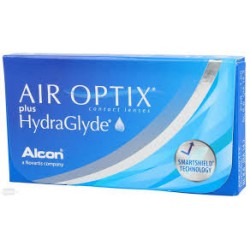How Long After Pink Eye Can You Wear Contacts

It is an condition that results in itchy and red eyes. When you suffer from this condition, you feel a lot of pain in your eyes. Bacteria, allergies, and viruses are some of the most causes of pink eye. It is an eye infection that is known to be extremely contagious and one must take precautions against it.
The risk of suffering from this is as high among children as it is among adults. When you suffer from pink eye, it is imperative that you avoid venturing out of the house.
Wearing contact lenses should be strictly avoided. Even wearing soft contact lenses wouldn’t be a good idea. Wear contact lenses with pink eye don’t go down well. You should consider visiting an eye doctor during this time. Schools, colleges, and offices can wait until the pink eye symptoms of this condition die down completely.
When Can I Wear Contacts?
If you have been wondering how long after pink eye you can start wearing contacts, then you must know its different types and the recovery time for one particular type of this eye infection could be vastly different from another type.
If a bacterial infection is a reason behind your suffering from pink eye, you would be asked to consume certain antibiotics. In such a situation, it could take anywhere between 24 and 48 hours for the symptoms to go away. Those who suffer from pink eye because of a virus invasion could take 7-8 days to recover from it. Allergy-induced pink eye will get better once the allergy starts subsiding.
Types of Pink Eye:
To get a better idea about how long you have to wait before you can wear contact lens, you must educate yourself about the various categories in which pink eye has been divided.
The amount of time your eyes will take to recover from this infection depends on the type of pink eye you are suffering from.
Viral Pink Eye:
Adenovirus and herpes virus are the two types of viruses that cause this infection . Every year, a large number of people suffer from adenovirus. Herpes virus, though not very common, proves to be quite fatal. Viral pink eye is often the result of an infection that travels from an individual’s nose to the eyes.
Respiratory infection is another common cause of viral pink eye. Depending on your condition, you would take 5-14 days to recover from viral pink.
Bacterial Pink Eye Infection:
To avoid the occurrence of bacterial pink eye, you should refrain from sharing your personal hygiene products with others. Dirty or unwashed hands coming in contact with eyes can be a cause of bacteria.
Sometimes, bacteria gets accumulated on old makeup products too. If you take home remedies and do not go for any kind of treatment procedure, it will take 8-10 days for you to recover from bacterial conjunctivitis or bacterial eye. To see faster recovery, you can take antibiotic drops.
Allergic Pink Eye:
It could be caused by different factors. If you are allergic to a particular substance or material, there is a high chance of that being the reason behind an allergic pink eye.
While some people could be allergic to grass, some might get triggered by tree pollen. Many a time, exposure to animal dander leads to an allergic eye. Once you become aware of the fact that you are allergic to something, you must make a conscious effort to steer clear of it.
Symptoms:
If you are observant enough, you will not miss out on noticing its symptoms. Its symptoms are quite different from that of light sensitivity.
Eye Redness:

While redness in the eye is one of the most common symptoms, you must keep checking for other symptoms to know whether your eye is still contagious or not. Suffering from blurred vision all of a sudden could point towards the pink eye.
You can start wearing contact lenses again when you do not see any symptoms.
Liquid Pouring:
Some of the most common signs of your eyes still being contagious include liquid pouring out of the eyes, red or pink color appearing unnaturally in the eyes, burning sensation, constant irritation in the eyes, and eyes getting swelled up.
How To Deal With Pink Eye:
When you suffer from this infection, a treatment procedure will be recommended to you based on the seriousness of the condition. If you are suffering from a mild case. it will take just a few days for it to be cured without any medical intervention. This holds true for both bacterial and viral.
As far as allergic is concerned, you will be able to recover from it as soon as you have the allergic reactions under control.
Treatment Tips:
Once it starts healing, you can do a few things to bring your eye back to normal. To control swelling, you can use hot or cold compresses. You can use products that result in artificial tears. Artificial tears help in adding more moisture to the eyes and easing out the symptoms.
Whenever you feel the need to wipe your eyes, you must use a clean cloth to do it. Along with antibiotic eye drops, you could use an antihistamine, which happens to be a medicine that helps in controlling allergies.

Air Optix HydraGlyde (6) contact lenses
Buy monthly Air Optix HydraGlyde (6) contact lenses without prescription with Contactlesnes4us.com. Have a look at the powe...

Soflens Daily Disposable Contact lenses (30)
The Softlens Daily Disposable Contact Lenses from Bausch & Lomb is disposable and designed for night time use. It delivers ...

Frequency 55 Aspheric 6
Cooper Vision's Frequency 55 Aspheric monthly contact lenses, known as Aspherics, correct vision issues like blurriness by ad...
Conclusion:
While it doesn’t result in permanent vision loss, you shouldn’t take it lightly. If you take the necessary precautions and give your eyes enough time to heal, it wouldn’t haunt you for long. You should avoid direct or indirect contact with dirt, dust, and dirty material.
Apart from getting back to your normal routine, you will also be able to wear contact lens again.
See also:






